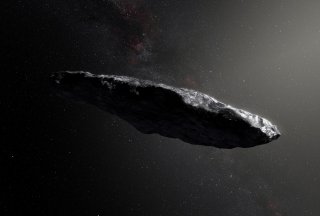Meet Oumuamua: The Rogue Planet That Doesn't Orbit a Star
According to a study published in the journal Nature Astronomy, the authors Yun Zhang and Douglas Lin believe that the data points them to the idea that 'Oumuamua was once part of a planetary body in another solar system – only to be ripped apart by its host star before being ejected into interstellar space.
Interstellar object 'Oumuamua first grabbed our attention when it whizzed through our solar system more than two years ago. Was it a comet or an asteroid? Perhaps an alien space probe? The guesses kept on piling up.
Fast-forward to today, and researchers were able to tap into their tech-heavy resources and use a computer simulation to determine how this otherworldly object may have formed.
According to a study published in the journal Nature Astronomy, the authors Yun Zhang and Douglas Lin believe that the data points them to the idea that 'Oumuamua was once part of a planetary body in another solar system – only to be ripped apart by its host star before being ejected into interstellar space.
The elongated and cigar-shaped 'Oumuamua, which means “a messenger that reaches out from the distant past” in Hawaiian, was first spotted by the Pan-STARRS project at the Haleakalā Observatory in Maui.
Because of its unique shape and ice-less surface, astronomers didn’t know exactly what they were looking at. Unlike other interstellar visitors, such as the Comet Borisov, 'Oumuamua was rocky and dry, more like an asteroid.
In addition, 'Oumuamua showed “non-gravitational acceleration” as it sped through our solar system – motion that can’t be attributed to tugs by more local and larger objects like Jupiter or our sun.
Then Zhang, of the National Astronomical Observatories of the Chinese Academy of Sciences, and Lin, professor emeritus of astronomy and astrophysics at University of California, Santa Cruz, considered the possibility that 'Oumuamua indeed came from a system with planets or smaller planetesimals, all orbiting a small, dense star.
Zhang and Lin discovered that if any of these objects came within about 220,000 miles of their host star, they would be stretched and shredded by the star’s immense gravity – an event known as “tidal disruption.” In theory, some of the fragments could be extremely elongated objects like 'Oumuamua, and they could be ejected into interstellar space.
This “tidal fragmentation scenario not only provides a way to form one single 'Oumuamua but also accounts for the vast population of asteroid-like interstellar objects,” lead author Zhang said in a statement.
Moreover, such an event isn’t uncommon. “On average, each planetary system should eject in total about 100 trillion objects like 'Oumuamua,” Zhang added.
To keep its odd shape, 'Oumuamua may have experienced extreme heating during flybys of its native star, and the eventual cooling caused it to develop a hard surface crust.
Ethen Kim Lieser is a Tech Editor who has held posts at Google, The Korea Herald, Lincoln Journal Star, AsianWeek and Arirang TV.

